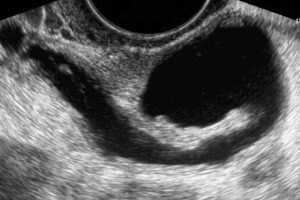What is an SIS Procedure?
Much testing is involved in the diagnosis of infertility. Women who are trying to conceive and haven’t after 12 months of unprotected sex will likely undergo a number of different procedures in order to assess what’s going wrong and what’s not working properly.
The SIS procedure (sometimes also known as SHG) is one of those tests. SIS is short for saline infusion sonohysterogram, which is used to evaluate the uterus as well as the shape of the uterine cavity. During the procedure, the ovaries can also be viewed in order to detect any problems.
Who is a candidate for SIS?
 There are a number of reasons a doctor might order an SIS. A women who has had issues with recurrent miscarriages, for example, might be a prime candidate for this procedure as it can detect uterine abnormalities that might contribute to these lost pregnancies.
There are a number of reasons a doctor might order an SIS. A women who has had issues with recurrent miscarriages, for example, might be a prime candidate for this procedure as it can detect uterine abnormalities that might contribute to these lost pregnancies.
If it is suspected that a woman might have issues such as polyps, fibroids, or scarring, that can also be detected through the use of this procedure. As a matter of fact, the SIS scan has become increasingly popular for evaluation of the uterine cavity in women who are experiencing infertility, according to a number of recent studies, since all of these things (polyps, etc.) can hinder embryo implantation.
Furthermore, the cost is fairly low compared to that of many other tests and SIS can provide some quick answers that will allow the doctor and patient to move forward in the correct direction.
When is the SIS performed?
Like many tests involved in the diagnosis and treatment of infertility, the timing of the SIS procedure is important. It is recommended that it be scheduled between days 5 and 11 of the patient’s menstrual cycle. The women’s menstrual period should be complete before the day of the scan.
How is SIS procedure performed?
An SIS is a basically painless procedure. It begins with an ultrasound examination that is done by placing a probe into the vagina. Next, a narrow catheter is placed in the vagina and guided through the cervix and into the uterine cavity. A sterile saline solution is introduced into the uterus and the ultrasound examination continues.
The saline fills the uterus so that its outline can be seen. This allows the technician to see things such as fibroids or polyps as well as any uterine scarring.
Are there any risks with the SIS procedure?
SIS procedure really is a simple test and there are only complications in less than 1 percent of all procedures. The most common risk is a pelvic infection that can develop a few days after the test.
In general, women who undergo SIS procedure may feel cramping for a few hours after the procedure and could experience some spotting or a vaginal discharge within 24 hours of the testing. Stronger pain or fever after SIS is unusual and should be brought to the attention of a doctor. Some physicians suggest the patient take a pain reliever before the procedure or may prescribe an antibiotic beforehand if the patient is prone to infection.
Go back